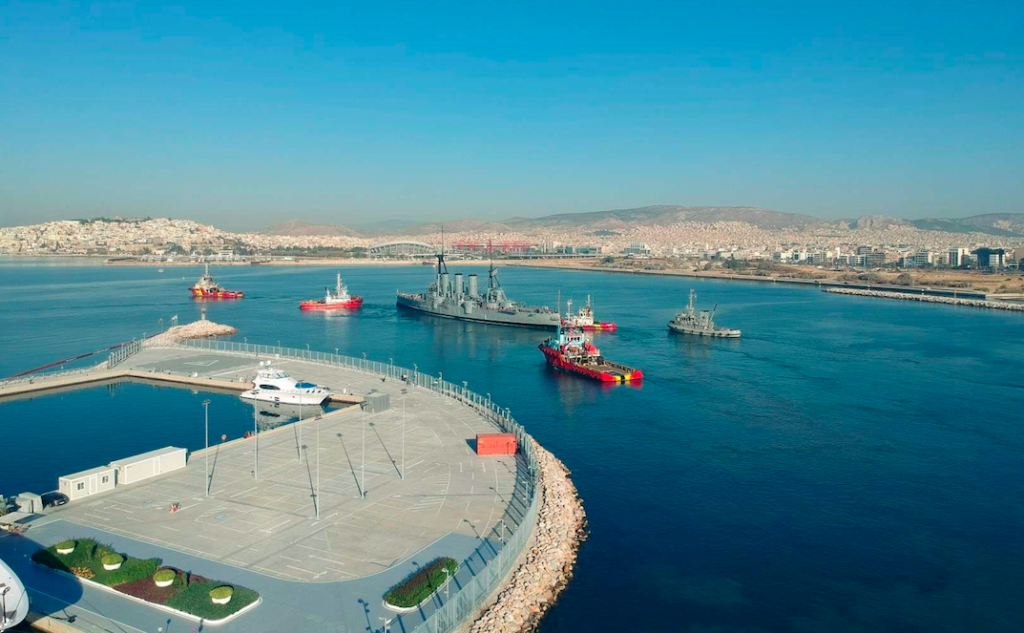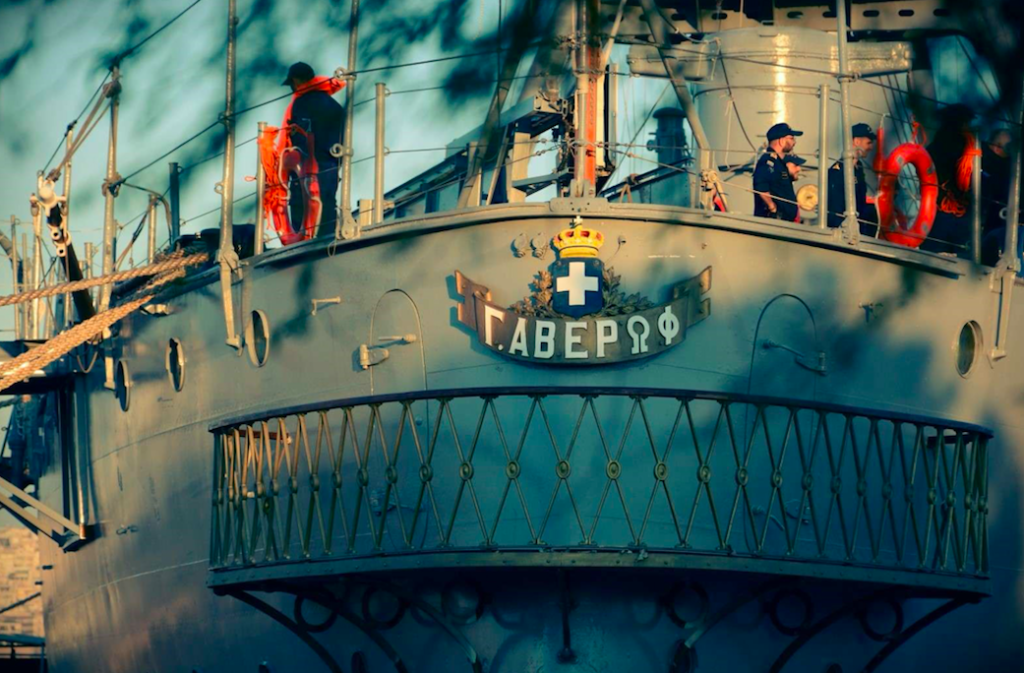
by Aggelos Skordas
Greece’s most historic and emblematic ship, the infamous “G. Averof”, set sail to Thessaloniki, crossing the Aegean Sea for the first time in 70 years. Hellenic Navy’s flagship is programmed to arrive at the port of Thessaloniki within the hours and will be open to the public as part of the events marking the October 28th national "OXI Day" celebrations. The battleship (also referred as cruiser) is the only part of Greece’s territory that has never lowered the Greek flag for 106 years, when it was first commissioned, and is now the world’s only surviving battle cruiser of the early 20th century, currently operating as a floating museum.
The ship, actually a Pisa-class armored cruiser, was built in Livorno, Italy by the Orlando Brothers Shipyard in 1910 and was acquired due to a generous donation of national benefactor Georgios Averof in whose honor the ship bears his name. Its first commander was Captain Ioannis Damianos, but it was Admiral Pavlos Koundouriotis who would link his name with the upcoming glorious victories it would bring to the Hellenic Navy.

“G. Averof” was at the time the most modern and powerful ship in the navies of either the Balkan League or the Ottoman Empire and thus it was given the sobriquet “devil ship” by its enemies. It premiered during the Balkan Wars and played a decisive role in the victorious naval combats of Elli and Limnos, becoming a symbol in people’s memories and a legend to be remembered, as it helped expand the country’s borders. The missions carried out by the battleship had a concrete impact on the land action, where the Ottoman forces suffered decisive defeats. During the Great War, the battleship sailed to the Keration Gulf and was the first Greek battle ship to reach Constantinople for centuries, affectionately nicknamed as “Lucky Uncle George” due to its consecutive strategic successes and the minor damages it suffered.
Some 20 years later, at the outbreak of World War II, despite its ageing, it took the lead once again as the fleet’s flagship and operated with the British Fleet in the Mediterranean after fleeing Greece following the collapse of the front in 1941. The old armored cruiser was considered appropriate for India-to-Suez convoys. On October 17th 1944, despite its almost 30 years of service, “G. Averof”, under the command Captain Theodoros Koundouriotis, carried the Greek government-in-exile back to liberated Athens. The battleship’s last voyage was to Rhodes in May 1947 to celebrate the accession of Dodecanese from Italy. Since then it remains towed at the Faliro Bay.
While in Thessaloniki the iconic battleship will be accessible to visitors on a first-come, first-served basis, in groups of 40 tours by specialist guides. According to the ship’s current commander, Commodore Sotiris Charalambopoulos, more than 150 requests have already been made by schools of northern Greece.


